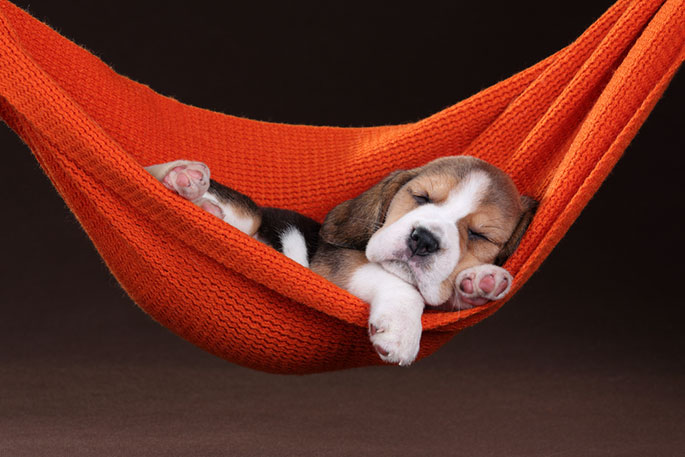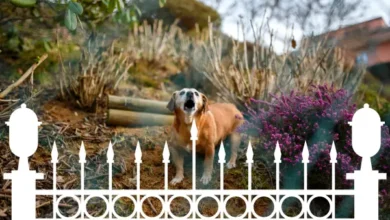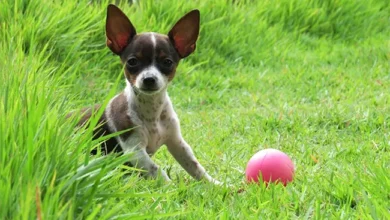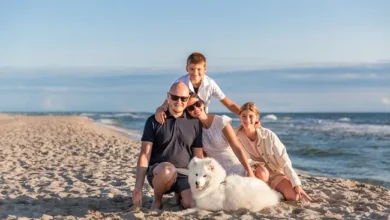
Getting a new puppy is a long-term commitment in both time and money. Caring for your puppy is not just a matter of disease prevention or calling in the vet when issues develop. Good and responsible care means understanding your puppy’s physiological needs. It means acknowledging that your puppy is not a small person in cute disguise. By understanding how your dog thinks, like the pack canine it is, and by understanding its unique nutritional and training needs, you will begin to realize what it takes to properly care for your four-legged buddy.
However, as challenging as it can get, the rewards are definitely worth the journey. Dogs have a way of putting a smile on your face. Besides their unconditional and life enriching, love and loyalty, they have been shown to be psychologically, emotionally and physically beneficial to their owners.
In the past, owning a dog was considered a privilege. Nowadays it is considered a mutually beneficial relationship. Today it is estimated that on international level, over half of the people have a dog living with them. Countries like Australia, Argentina, Mexico, Brazil, Russia and USA have the highest percentage of dog owners.
If you have decided to become a dog parent…congratulations…it is the beginning of an amazing adventure. To make things simpler and help you navigate through the minefield of responsibilities and tricks, we wrote this article as a guide through the first 6 months of your puppy’s life.
1. WELCOMING YOUR NEW PUPPY
1.1. Choosing the right breed
When considering the type of dog you want, you need to ask yourself which breed suits your lifestyle best. Considering the fact that there are over 100 dog breeds, all with different sizes, looks and characters, making the right choice can be daunting. Choose a breed you like and research its needs, if they suit your lifestyle and habits, you have got the match.
If you decide to adopt a mixed dog, then you are spared from this problem. When it comes to adoption, usually it is the dog that chooses you, not the other way around.
1.2. Choosing the right sex
The two sexes differ in both looks and temperament. Males are bigger and more muscular. They are more active, require more play time and tend to leave urine marks everywhere. Females demand and give more affection. They are more willing to learn obedience and are easier to housetrain.
1.3. Selecting a breeder/dog shelter
Breeders, neighbors, pet stores, dog shelters and advertisements are all potential sources. Usually the healthiest dogs come from neighbors and amateur breeders by accident. Equally healthy puppies come from diligent, conscious breeders who do what they do because they love their breed rather than because they want to make money. The same goes for well-organized dog shelters.
1.4. Choosing your puppy
Choosing a puppy can be intensely emotional. You may instinctively be drawn to the calm, shy dog that cowers and is trampled by its brothers and sisters. Or you may be impressed by the pup with waggiest tail and playful personality. Which personality you choose, is totally up to you. Just remember that you will need to cohabitate with that personality for the next 10-15 years.
1.5. Preparing for your puppy
Before your new puppy arrives, make sure to puppy proof your home. Puppy proofing ensures the safety of the new arrival. Keep in mind that puppies are naturally inquisitive and like to explore. To properly puppy proof your home, follow these steps:
- Place all breakable items, hazardous detergents and household chemicals out of the puppy’s reach
- Hide or cover all visible electrical cords
- Restrict access to dangerous and potentially toxic plants
- Use fences if you need to limit your puppy’s area of living
Before the new puppy arrives, it is also important to purchase all the essential supplies. You need to have:
- Puppy food
- Food and water bowl – ceramic and metal bowl with nonslip rubber bases are excellent choices for young and clumsy puppies.
- Dog bed – molded plastic beds are relatively chew-proof and easy to clean. Cover them with washable beddings with zip-off covers that can be easily removed for cleaning.
- Leash and collar – inexpensive, lightweight leashes and collars are ideal for puppies. Once it gets used to them, you can invest in some more expensive and attractive designs.
- Identification – have an engraved tag already, or a capsule ID container in which you writ relevant details, including your home and cellular phone numbers.
- Toys – select several toys for your puppy’s entertainment. It can use them to chew on, squeak or pull.
1.6. Bringing the new puppy home
When transporting the puppy from its old home into your house, make sure to take a towel with you. It is advisable to rub the towel on the mum and littermates and take the scented towel with you. Always keep the towel near your new puppy. That way your puppy will familiarize itself with the new environment more easily.
More often than not, puppies get carsick. To avoid a mess, take a plastic bag, some old blankets and paper napkins with you.
2. NUTRITION
A young puppy needs four meals a day. It is advisable to feed your new puppy the same food formula the breeder used, for at least 7-10 days after moving in your place. Also try to stick to its old feeding schedule. It is important to make gradual food switches. Sudden changes in the dieting regimen may lead to upsetting its sensitive stomach. Once the puppy is settled and adapted to the new environment and it starts passing well-formed stools, you can begin introducing new foods, by replacing small portions of the old food with new foods.
Keep in mind that a good and high-quality nutrition gives your puppy the best chance of achieving its full potential.
3. USING THE TOILET AREA
Dogs are instinctively clean animals, unwilling to soil their nest. Take advantage of this and them that the entire home represents the nest. Your puppy needs to be taken to its toilet area each time it wakes, after each meal and after each session of activity and play. Keep in mind that puppies do not have reliable control over their bladders. Until it is house trained, there will be lots of messes to clean up. Never punish your puppy making mistakes. It is still young and it may take him some while until he realizes where his toilet is. If your puppy poops on the wrong place, collect the poop and place it on the right toilet spot. Make sure to clean the area where it pooped with scented but pet-friendly disinfectant. The next time your puppy needs to poop the smell of the disinfectant will repel him, while the smell of his own poop will attract him.
4. PUPPY HEALTHCARE
4.1. At the vet’s office
Every dog needs excellent preventative (vaccinations, parasite control) and therapeutic health care. We advise you to take your puppy at the vet as soon as possible. The vet will perform a thorough physical examination and a fecal exam to check for internal parasites or worms. According to the findings he will prescribe you a deworming treatment. The deworming treatment should be done regularly, following a strict schedule. The same applies for the treatments against external parasites – ticks, lice and fleas. The vet will also inform you about your puppy’s vaccination schedule. Once you are at the vet’s office make sure your dog is properly identified (microchip, tag, tattoo).
It may seem early, but it is responsible to discuss the possibility of spaying/neutering your puppy with the vet, as early as possible. The vet will explain you the benefits of these procedures.
4.2. Pet insurance
In Australia Choosing a pet insurance, is an option many dog owners tend to overlook. Good Petcare policies cover a wide range of treatments and conditions, which may be beneficial on the long run. It is also recommended to include your pet in your planning for an emergency or disaster.
5. TRAINING
At first it may sound good to let our puppies do whatever they want to do. That way we give them the ultimate freedom to act out their natural inclinations. No matter how good it may sound, the idea is quite unrealistic. We always teach our children good manners, socially acceptable behaviors, hygiene habits and how to control their natural emotions. We keep an eye on their safety, channel their skills into constructive pursuits and educate them. The same applies for our canine babies.
The first things your new puppy needs to learn are:
- the location of its belongings: food and water bowls, bed, toys, toilet
- its daily schedule: when it is time to eat, sleep, play, get up
Then you must teach your puppy to understand certain words. Keep in mind that even young puppies are acutely aware of your body language and sounds and can quickly learn to interpret your voice tone and stance.
Tip: It is advisable to use simple words like YES or NO instead of complicated phrases.
The puppy should think of the crate as its own personal and safe place. At first it is normal for your puppy to refuse spending time at the crate. However, once it gets used to the crate, it will go into it on its own. The perfect period for crate training your puppy is when it is 2-3 months old.
6. PUPPY DEVELOPMENT
Different milestones of your puppy’s life occur at different timing. What to expect of your puppy and when to expect it is well-researched and fairly predictable.
- 1 month – the milk teeth are coming in and the weaning begins.
- 1 ½ months – nipping, playing, chewing and fighting start.
- 2 months – usually this is the stage when you get the puppy at your home. it is the point when housetraining and integration with the new household should begin. It is also the time when in partnership with your vet, you need to decide on your puppy’s future treatments.
- 3 months – the puppy starts chasing other animals, thrown balls or its own tail. It also starts to recognize its name.
- 4 months – the puppy starts to respond to certain, simple commands, like sit, come, wait and down.
- 5 months – this is the time when the vaccinations are completed. Now your puppy can start its training classes and can be enrolled into puppy school and begin socializing.
- 6 months – the puppy enjoys playing interactive games with you and starts understanding more complex commands. Certain small dog breeds reach sexual maturity when 6 months old.



